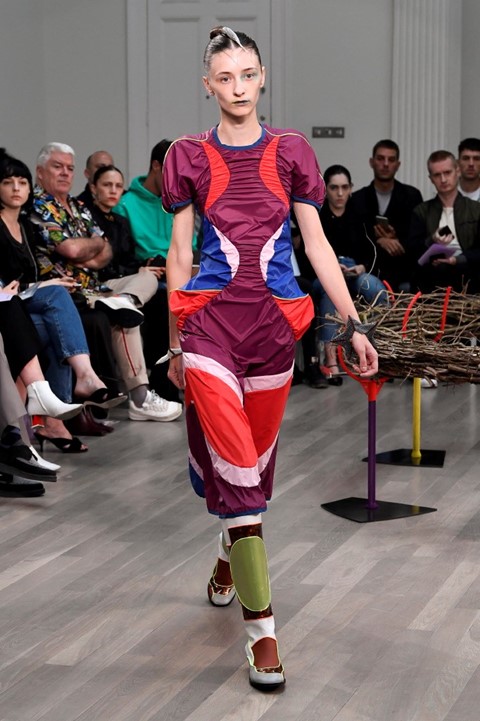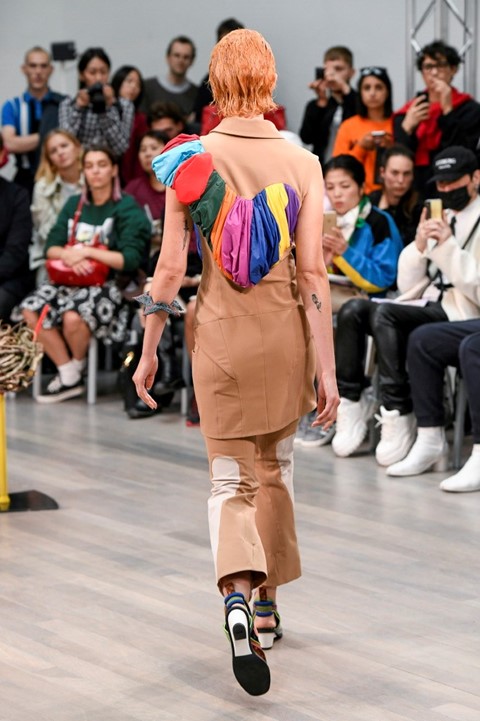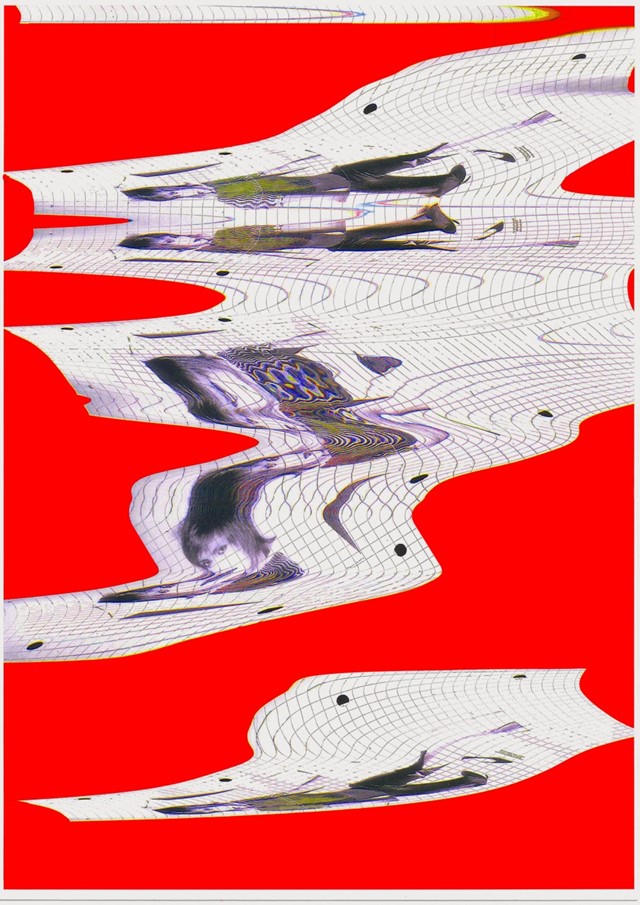AnOther talks to Laura and Deanna Fanning, the Australian sisters who debuted their first womenswear collection for Kiko Kostadinov today
The appointment of creative directors is typically reserved for well-established houses, but Kiko Kostadinov – who held his first on-schedule menswear show a brief, if acclaimed, two years ago – banked on fresh talent to lead his first womenswear collection shown this afternoon. Australian sisters Laura and Deanna Fanning, who themselves only graduated from the Central Saint Martins MA course this year, presented a debut collection which mused on dystopian futures.
Much informed by Deanna’s background as a knitwear designer – for their graduate collection, shown as a duo, she created the fabric which Laura as a womenswear designer then shaped into clothing – they describe their style as “aggressively feminine”. Inspiration might come from 1960s sci-fi movies, east German knitwear patterns or simply the overblown shapes of 1980s ready-to-wear. (They remember their aunt making clothing in the style of Claude Montana at home, on a sewing machine.)

Today, the starting point of the collection was Aldous Huxley’s Brave New World, and the colours which ascribed to each “caste” in the dystopian 1932 novel: black, khaki, green, mulberry and grey. Here, these colours became panels in cleanly proportioned tailoring – evoking Kostadinov’s own fastidious menswear – cut with seams at the knee to allow for movement. (“Our woman is fast and she’s mobile,” Laura says.) Surface interest came in lightweight, vividly coloured nylon, gathered to shape the body in the style of 1980s sportswear. Dresses – knitted in a single piece – clung to the body, padded at the shoulders for impact.
Here, in conversation with AnOther the day before the show, the pair talk discovering inspiration in unlikely places – and how they found a counterpoint to Kostadinov’s menswear.

On pulling together their first on-schedule show…
Deanna Fanning: “It’s been really fun. This week has been good because you get to see the fruits of your labour. Sometimes in the studio you’ve worked on something for two days and you’re like ‘I just want to get this right!’ But then in the fittings you get to see it all come together and it’s good to have other people’s input too – it starts to turn into something else. With the girls coming, and seeing all of the hair and different make-up options – each one has their own look – I feel like the character is really developing.”
On finding inspiration in strange places…
DF: “For the knitwear – we have these padded, cropped kind of polo shirts – it came from looking at these old east German knitting books from the 1930s. They looked so authoritarian, all these hand-knitted pieces, but then at the same time so glamorous. We also looked at the film the The Women – it’s in black and white but we saw a segment in technicolour, and actually I think they’ve done a really bad remake – and we looked at the costume designer Gilbert Adrian’s costumes from the 1940s. They have this fashion show in it has all this occasion wear, but also tennis skirts...”
Laura Fanning: “It’s like these gowns mixed with 1940s sportswear and the proportions of tenniswear.”

On making the collection stretchy…
DF: “I think absolutely everything in the collection is stretch! There’s this feeling of utility. All of the knees are cut into the trousers – you can see them when they are hanging on the rail – so what it means is that you can tailor a suit so you can still walk up the stairs.”
LF: “Or kneel in the studio! I think our woman is fast and she’s mobile and the clothes – they don’t let her down.”
On working with Kostadinov…
DF: “We work really well with Kiko, and work well with the studio, so it’s really harmonious. I think the way he runs things is really good. We’ve had to adjust the way with work, but only with timings, and that’s just a professional thing. He’s letting us do whatever we want to do. We got to build the team we wanted to build. We were talking about it last night and we were saying we have the dialogue between ourselves, but once you keep sharing that dialogue and get the layered interpretation, the language becomes so much stronger.”
LF: “I think the similarity between us [and Kostadinov] is that we both have a strong identity for a man and a woman, even if it’s separate.”
